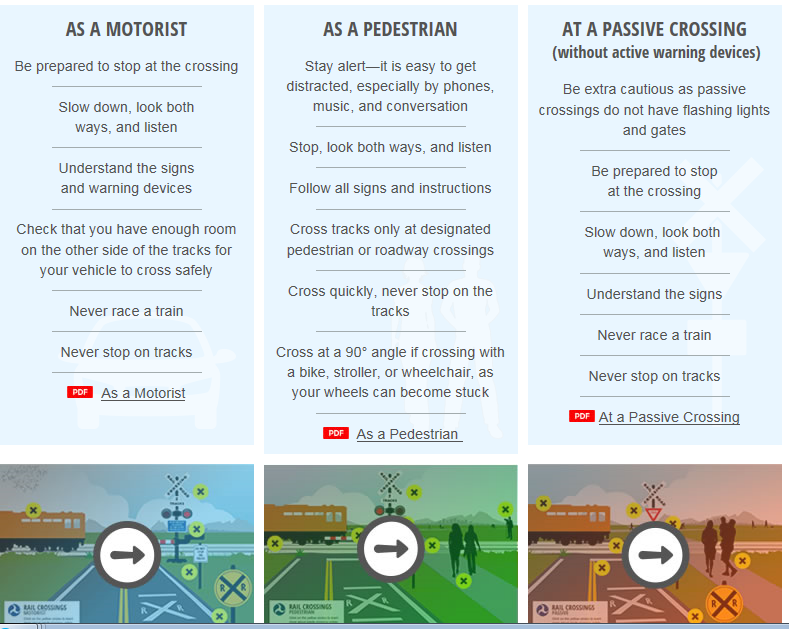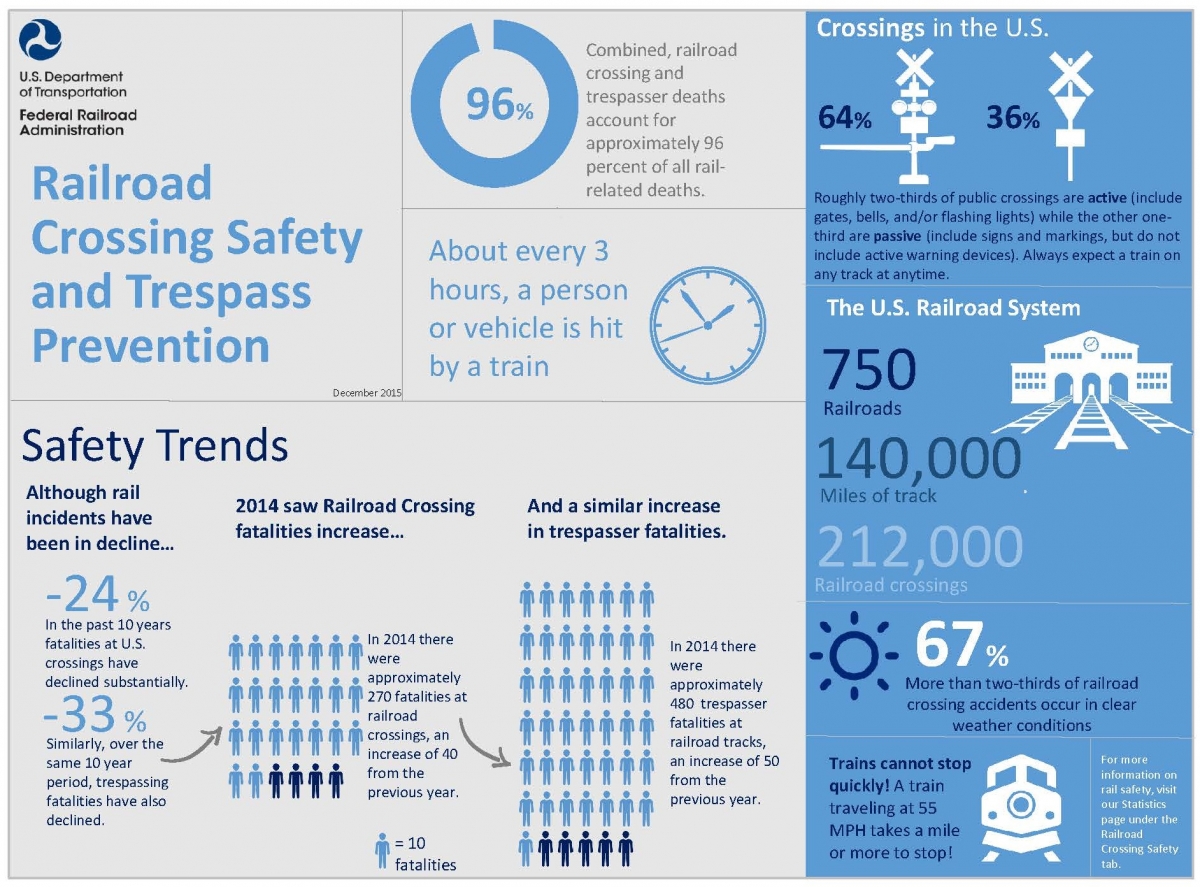The U.S. Department of Transportation (DOT) has launched the “Stop! Trains Can’t” ad campaign targeting young male motorists and encouraging them to act cautiously at railroad crossings.
The campaign is the latest in a two-year effort by DOT to reduce accidents and fatalities at railroad crossings around the country. The National Highway Traffic Safety Administration (NHTSA) and the Federal Railroad Administration (FRA) have partnered in the nationwide effort.
(See video, courtesy of the Federal Railroad Administration and YouTube)
“The message is simple: Ignoring railroad crossing signs or attempting to race or beat a train can have deadly consequences,” said U.S. Transportation Secretary Anthony Foxx.

“Hundreds of lives could be saved each year by simply following the rules.”
Although rail incidents have declined over the last 10 years, railroad crossing fatalities spiked in 2014. Last year alone, 232 people died in railroad crossing accidents, and approximately every three hours, a person or vehicle is hit by a train in the United States.
The $7 million media buy will target male populations aged 18 to 49 years old in states with the nation’s 15 most dangerous crossings, as well as in states where 75 percent of the crossing accidents occurred in 2015. Male drivers are involved in nearly 75 percent of all railroad crossing accidents.
The ad will run heavily in the following states: California, Illinois, Texas, Louisiana, Indiana, Ohio, Florida, Georgia, Missouri, New York, North Carolina, South Carolina, Kentucky, Alabama, Pennsylvania, Tennessee, Mississippi, New Jersey, Arkansas and Arizona.
“Your life is worth more than a few saved minutes, and trying to outrun a train isn’t worth the risk,” said NHTSA Administrator Dr. Mark Rosekind.
“When a train is coming, the only choice is to stop. Trains can’t.”

By law, trains always have the right of way because they cannot swerve, stop quickly, or change directions to avert collisions. A freight train travelling at 55 miles per hour takes a mile – the length of 18 football fields or more – to come to a stop once the emergency brakes are applied.
“Education is key here – sometimes a driver is distracted, or in an unfamiliar area. Other times, the state highway department has not done enough to warn drivers they are approaching a crossing,” said FRA Administrator Sarah E. Feinberg.
“We must do everything we can to give drivers the information they need to keep themselves and their families safe – and this ad helps us do just that.”
Did you know…
About every three hours, a person or vehicle is hit by a train in the U.S.
Most, if not all, of these accidents can be prevented.
How can you help prevent these accidents?
By the Numbers: Railroad Crossing Safety
What FRA is doing to improve railroad crossing safety
- Partnering with tech companies to add alerts of upcoming railroad crossings to map applications
- Testing intrusion detection technology to provide advanced warning to trains of a vehicle on tracks
- Working to develop information sharing to identify and target trouble spots
- Awarding nearly $10 million to help communities upgrade crossings where crude oil and energy products are transported
- Awarding $25 million for states to upgrade crossings
For more information on the “Stop! Trains Can’t” campaign, visit www.transportation.gov/stop-trains-cant

In April, the FRA, in continued efforts to increase safety at railroad crossings, released a list of railroad crossings in the United States where multiple incidents have occurred in recent years.
The list includes 15 crossings where 10 or more incidents have occurred during the last decade
Many of the 15 crossings are at busy, multiple lane intersections in neighborhoods with significant truck traffic or have tracks crossings roadways on a diagonal.
Many crossings close to a traffic intersection also have their warning systems interconnected to traffic lights.
If sequenced and working correctly, these interconnected systems can help prevent vehicles from stopping over railroad tracks where there is limited roadway between the tracks and the nearby intersection.
Crossings with 10 or more incidents during the last decade
Click on the crossing ID for a Google Street View of the crossing.
|
Crossing ID |
CITY |
STATE |
TOTAL INCIDENTS |
TOTAL FATALITIES |
TOTAL INJURIES |
| Phoenix | Arizona |
24 |
0 |
2 |
|
| Phoenix | Arizona |
21 |
0 |
4 |
|
| Glendale | Arizona |
19 |
0 |
3 |
|
| Ashdown | Arkansas |
16 |
4 |
4 |
|
| Phoenix | Arizona |
15 |
0 |
4 |
|
| Elmwood Park | New Jersey |
14 |
1 |
4 |
|
| Muncie | Indiana |
14 |
0 |
3 |
|
| Baton Rouge | Louisiana |
13 |
0 |
0 |
|
| Evergreen | Alabama |
13 |
5 |
1 |
|
| Pascagoula | Mississippi |
12 |
0 |
7 |
|
| Cleveland | Ohio |
12 |
0 |
1 |
|
| Glendale | Arizona |
10 |
0 |
1 |
|
| Waycross | Georgia |
10 |
0 |
1 |
|
| Memphis | Tennessee |
10 |
2 |
4 |
|
| Houston | Texas |
10 |
0 |
2 |



















